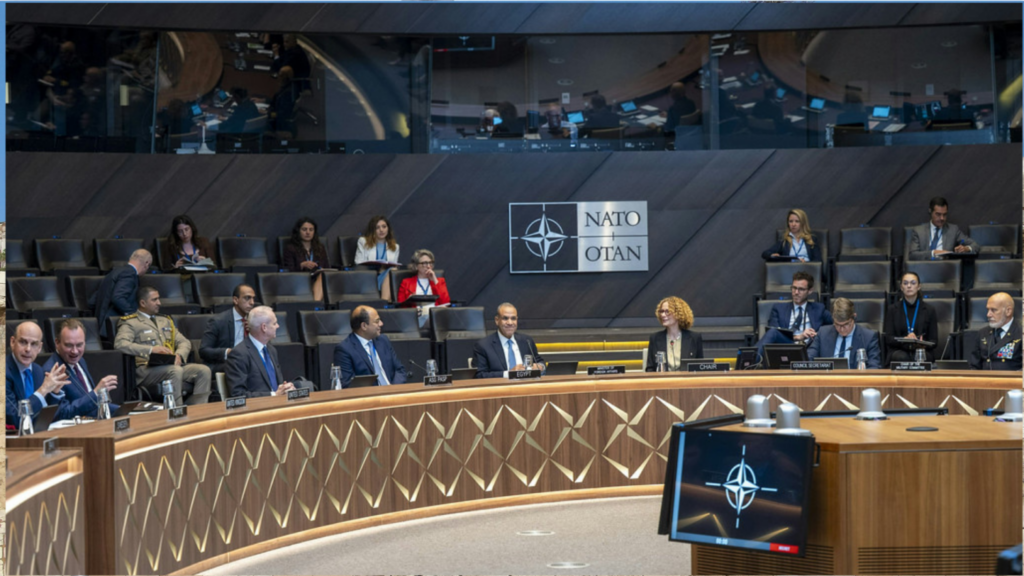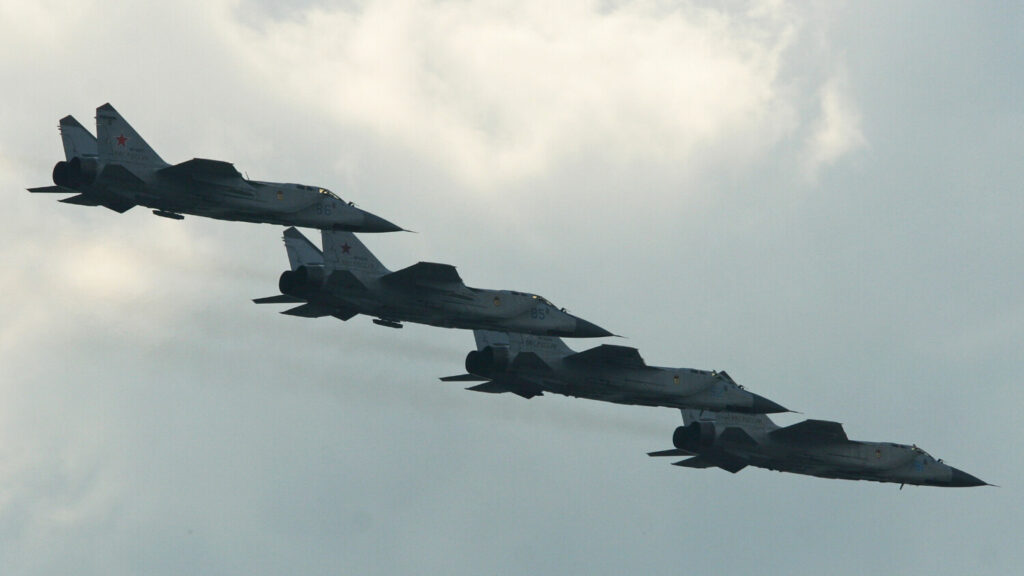From Exceptionalism to Militarisation: the Changing Landscape of the Arctic
Once a symbol of collaboration amid global competition, the Arctic is reflecting the fractured face of a multipolar world.
For decades, the Arctic was a rare place of peace and cooperation among the countries of the world, a phenomenon often referred to as Arctic exceptionalism. Beginning with Mikhail Gorbachev’s 1987 Murmansk Initiative, the High North remained largely shielded from great power conflict including tense periods like the end of the Cold War. This cooperative spirit found institutional expression in the Arctic Council which was established in 1996 to promote consensus on environmental protection, sustainable development and scientific collaboration (Arctic Council, 2022).
However, this paradigm is shifting, as geopolitical tensions, particularly following Russia’s full-scale invasion of Ukraine in 2022, have driven a surge in military investment and strategic competition across the region (CSIS Arctic Military Tracker, 2024; SIPRI, 2025). The Arctic, once defined by collaborative governance, is becoming a frontier of realpolitik.
The Collapse of Arctic Exceptionalism
A crucial turning point came in March 2022 when seven of the Arctic Council’s eight members – Canada, Denmark, Finland, Iceland, Norway, Sweden and the United States – suspended cooperation with Russia, which was chair of the council at the time (Arctic Council, 2022). This move effectively paralysed the council’s operations and undermined its role as the primary multilateral forum for Arctic affairs.
Russia, controlling nearly 53 per cent of the Arctic Ocean’s coastline and home to about half of the Arctic’s population, responded by strengthening its defense posture in the region. Since 2008, it has reactivated more than 50 Soviet-era military outposts across the Arctic and built up the capabilities of its northern fleet based near Murmansk. This fleet now includes approximately 40 ice-class vessels, 32 submarines and over 20 refurbished or new airfields north of the Arctic Circle. Russia has also deployed advanced S-400 missile defense systems to strategic locations such as Franz Josef Land and Novaya Zemlya, significantly expanding its anti-access/area denial (A2/AD) capabilities (CSIS Arctic Military Tracker, 2024).
NATO’s Reorientation in the North
In response, NATO has had to recalibrate its Arctic strategy. Finland and Sweden’s accession to NATO in 2023 and 2024 respectively expanded the alliance’s border with Russia in the Arctic by more than 1,300 kilometers thereby reshaping security dynamics in the High North (NATO Strategic Review, 2024).
In 2024, the US Department of Defense announced a $4.1 billion, five-year plan to deploy Arctic-capable surveillance systems and bolster critical infrastructure. Norway’s large-scale ‘Cold Response’ exercises, designed to rehearse Arctic warfare and joint operations, grew from 16,000 troops in 2016, to over 35,000 troops from 27 nations in 2024 (NATO Strategic Review, 2024). Canada has likewise intensified its Arctic operations: Operation Nanook in 2023 involved around 2,000 personnel, five ships, and nine aircraft to project sovereignty and improve readiness (US Department of Defense, 2023).
Moreover, NATO is exploring advanced drone and satellite technologies to monitor so-called Arctic ‘gray zones’ which are vast areas with sparse populations and limited infrastructure but increasing strategic significance (NATO Strategic Review, 2024).
The Economic and Climate Dimensions
While geopolitics is central to the developments in the Artic, climate change has become a critical enabling factor. The Arctic is warming roughly four times faster than the global average, making previously impassable sea routes navigable, and unlocking access to untapped natural resources (SIPRI, 2025).For instance, traffic on the Northern Sea Route (NSR), along Russia’s Arctic coast, rose from 1.7 million tonnes in 2010, to 36 million tonnes in 2023, a staggering increase of about 2,000 per cent (CSIS Arctic Military Tracker, 2024). The US Geological Survey estimates that the Arctic may hold 13 per cent of the world’s undiscovered oil and 30 per cent of undiscovered natural gas – most of it beneath Russian territory (SIPRI, 2025).
China’s Dual-Use Strategy
China, despite not being an Arctic nation, declared itself a ‘near-Arctic state’ in its 2018 Arctic Policy. By 2023, Beijing had invested more than $15 billion in Arctic infrastructure, ports and scientific research facilities along the NSR in partnership with Russia (RAND Corporation, 2023). This convergence of economic opportunity, energy security and strategic positioning has ignited a new ‘scramble for the Arctic’.
China’s activities in the Arctic reflect a complex blend of commercial, scientific and strategic interests. It operates two icebreakers and has announced plans to launch a nuclear-powered icebreaker by 2026 (RAND Corporation, 2023).
Between 2015 and 2023, China also invested in six deepwater Arctic ports and established three satellite ground stations north of the Arctic Circle. A 2023 RAND Corporation study revealed that over 40 per cent of China’s Arctic scientific research stations likely possess dual-use potential serving both civilian and military purposes. Such developments point to China’s growing desire not only for commercial gains but also for influence over future Arctic governance and secure maritime access routes (RAND Corporation, 2023).
Returning to Realpolitik
The Arctic’s transformation from a place of peace to one of rising militarisation mirrors broader global tensions. While climate change is transforming the physical landscape, political and military dynamics are redrawing strategic boundaries.
Defense spending on Arctic-specific capabilities by Arctic nations has surged by more than 65 per cent since 2018, according to the SIPRI Yearbook 2025. This trend suggests that without fundamental structural changes, the Arctic is unlikely to revert to its earlier cooperative baseline.
Once a symbol of collaboration amid global competition, the Arctic now reflects the fractured face of a multipolar world. It has become a mirror – albeit a frozen one – of the world’s shifting order (SIPRI, 2025).
Bibliography
Arctic Council, 2022. Official Communications, 2022–2024. Arctic Council Secretariat.
Center for Strategic and International Studies (CSIS), 2024. Arctic Military Tracker. [Online] Available at: https://arcticmilitarytracker.csis.org/ [Accessed 6 June 2025].
CSIS Arctic Military Tracker, 2024. Arctic Military Developments. Center for Strategic and International Studies.
Congressional Research Service (CRS), 2024. Changes in the Arctic: Background and Issues for Congress. [Online] CRS Report RL34391. Available at: https://crsreports.congress.gov/product/pdf/RL/RL34391 [Accessed 6 June 2025].
European Defence Agency (EDA), 2023. Defence Data 2021-2022. [Online] Available at: https://eda.europa.eu/info-hub/defence-data-portal [Accessed 5 June 2025].
Försvarsmakten (Swedish Armed Forces), Various. Annual Defence Reports. [Online] Available at: https://www.forsvarsmakten.se/en/ [Accessed 5 June 2025].
High North News, 2015-24. Articles on Nordic Arctic defence investments. [Online] Available at: https://www.highnorthnews.com/en [Accessed 5 June 2025].
High North News, 2017-24. Various articles on China’s Polar Silk Road and Arctic investments. [Online] Available at: https://www.highnorthnews.com/en [Accessed 5 June 2025].
High North News, 2015-2024. Arctic security and investment reporting. [Online] Available at: https://www.highnorthnews.com/en [Accessed 6 June 2025].
Jamestown Foundation, 2023. Russia’s Militarization of the Arctic. Eurasia Daily Monitor. [Online] Available at: https://jamestown.org/ [Accessed 6 June 2025].
Ministry of Defence of Norway, Various. Long Term Defence Plans. [online] Available at: https://www.regjeringen.no/en/dep/fd/id380/ [Accessed 5 June 2025].
Ministry of Defence of the Russian Federation, Various. Annual Reports. [Online] Available at: http://eng.mil.ru/en/index.htm [Accessed 6 June 2025].
NATO Strategic Review, 2024. The Arctic’s Strategic Rebalance. NATO.
North Atlantic Treaty Organization (NATO), 2024. Defence Expenditure of NATO Countries (2014-2024). [Online] NATO. Available at: https://www.nato.int/cps/en/natohq/topics_49198.htm [Accessed 6 June 2025].
Puolustusvoimat (Finnish Defence Forces), Various. Annual Defence Reports. [online] Available at: https://puolustusvoimat.fi/en/frontpage [Accessed 5 June 2025].
RAND Corporation, 2023. China’s Interests in the Arctic. RAND Corporation.
Reuters, 2018-24. Various articles on Russian Arctic military expansion. [Online] Available at: https://www.reuters.com [Accessed 6 June 2025].
Reuters, Various. Reports on Arctic LNG projects, military deployments, and geopolitical developments in the Arctic. [Online] Available at: https://www.reuters.com [Accessed 6 June 2025].
SIPRI, 2025. SIPRI Yearbook 2025. Stockholm International Peace Research Institute.
State Council Information Office of the People’s Republic of China, 2018. China’s Arctic Policy. [Online] Available at: http://english.www.gov.cn/archive/white_paper/2018/01/26/content_281476026660336.htm [Accessed 5 June 2025].
SIPRI, 2024. Military Expenditure Database. [online] Stockholm International Peace Research Institute. Available at: https://milex.sipri.org/ [Accessed 5 June 2025].
Stockholm International Peace Research Institute (SIPRI), 2024. SIPRI Yearbook 2024: Armaments, Disarmament and International Security. Oxford: Oxford University Press.
US Department of Defense, 2023. Arctic Strategy, US Government Printing Office.



